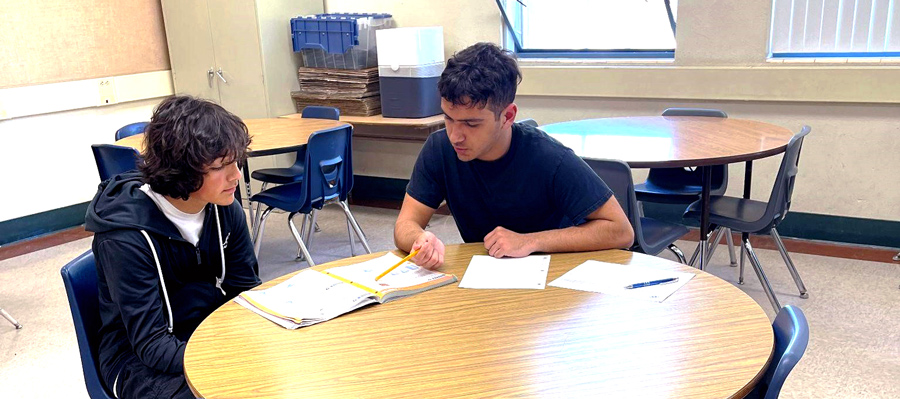class act Best practices in action
Best practices in action

class act
Best practices in action

Student tutors see super results

What started as a classroom program to help high school students catch up to grade level in math has multiplied into a districtwide system where students are paid to tutor their peers in a variety of subject areas.
Glendale Unified School District’s Golden Bell Award-winning Super Tutor program was created by Stepan Mekhitarian, the district’s director of Innovation, Instruction, Assessment and Accountability, when he worked as a teacher. Mekhitarian offered additional academic support to students during periods like office hours, but with large groups seeking help, he decided to recruit peer tutors who had content mastery and provide them training on how to deliver effective instruction.
Mekhitarian eventually took on his current role at the district and began working to expand the program beginning with a small number of high schools in 2019.
“At that point, it was already creating a lot of traction,” Mekhitarian recalled. “In the past, I’d only done it in my own classroom, so to scale it up to the school-level was a big step in the right direction … We were able to get some super tutors at the high school level to also go to a nearby middle school so they could expand their expertise and have younger students take advantage.”
When the school board opted to fund the program during the pandemic, it elevated students’ role as tutors from a volunteer position to a paid one. “That’s when it really expanded to us having well over a hundred super tutors every single time we put out a call,” Mekhitarian said.
Mekhitarian said becoming a tutor is many students’ first job. Middle and high school students are eligible to apply if they meet certain requirements and must go through normal procedures, such as securing work permits and filling out HR paperwork.
With so much progress made, the program is still growing.
“This current school year is the first where we’ll be supporting elementary schools as well,” Mekhitarian said. “We have a very robust after-school program here at Glendale Unified and there are a variety of activities. The Super Tutor program is being added to those offerings.”
In addition to assisting students younger than them, tutors may also work with older students as needed. And just because the tutors are high performing in one subject, doesn’t mean they can’t seek help in others.
“No one is an expert at all subject areas. So even a student who is high performing in most might be struggling in a more particular area and now with this program, they have a way to go get the help they need to be successful there as well,” Mekhitarian said.
With the expansion to elementary schools, Mekhitarian estimated that the program will be present at 27 campuses this year, or 90 percent of the district’s schools.
Tutoring is available for roughly two dozen courses ranging from math and science to English and “track free” classes.
Supervising teachers consider students’ transcripts to help determine which areas they will tutor in.
Before entering the classroom as an employee, aspiring tutors take an hour-long training that Mekhitarian compares to a “mini teaching credential.” The crash course covers how to approach teaching a topic from multiple angles until one works for their student, leading their student on a path to discovery through questions, following the “I do, you do, we do” process and incorporating elements of empathy and social-emotional learning.
“Some of the result of that have been super tutors telling us that once they graduate, they want to pursue careers in teaching,” Mekhitarian said.
Each school site runs the program a little differently to accommodate their setups with sessions taking place in individual classrooms, libraries or other similar spaces. Students can find out where and when tutoring sessions are happening by viewing an online schedule.
The number of students served per tutor varies, but tutors note the number of students helped on their timesheets. That attendance data informs adjustments to session times and subject areas to maximize impact. A digital sign-in system is in the works to better track who is taking advantage of services and make sure all students are receiving the support they need.
Oftentimes the students form a bond with their peer tutor, and they return to the same person. “That tie allows them to be open and vulnerable, especially when the student showing up to tutoring, acknowledging that they need help, is already a pretty big step,” Mekhitarian explained.
“We believe in differentiated supports for students, and we know that students need to feel like they have a safe space where they get help on things that they struggle with and maybe they aren’t as willing to share,” he added. “I encourage everyone to create this type of program to give students the support they need to be successful and give the tutors that leadership opportunity to be able to share with their peers, get inspired about the prospects of becoming an educator and about building their own subject matter expertise.”
— Heather Kemp